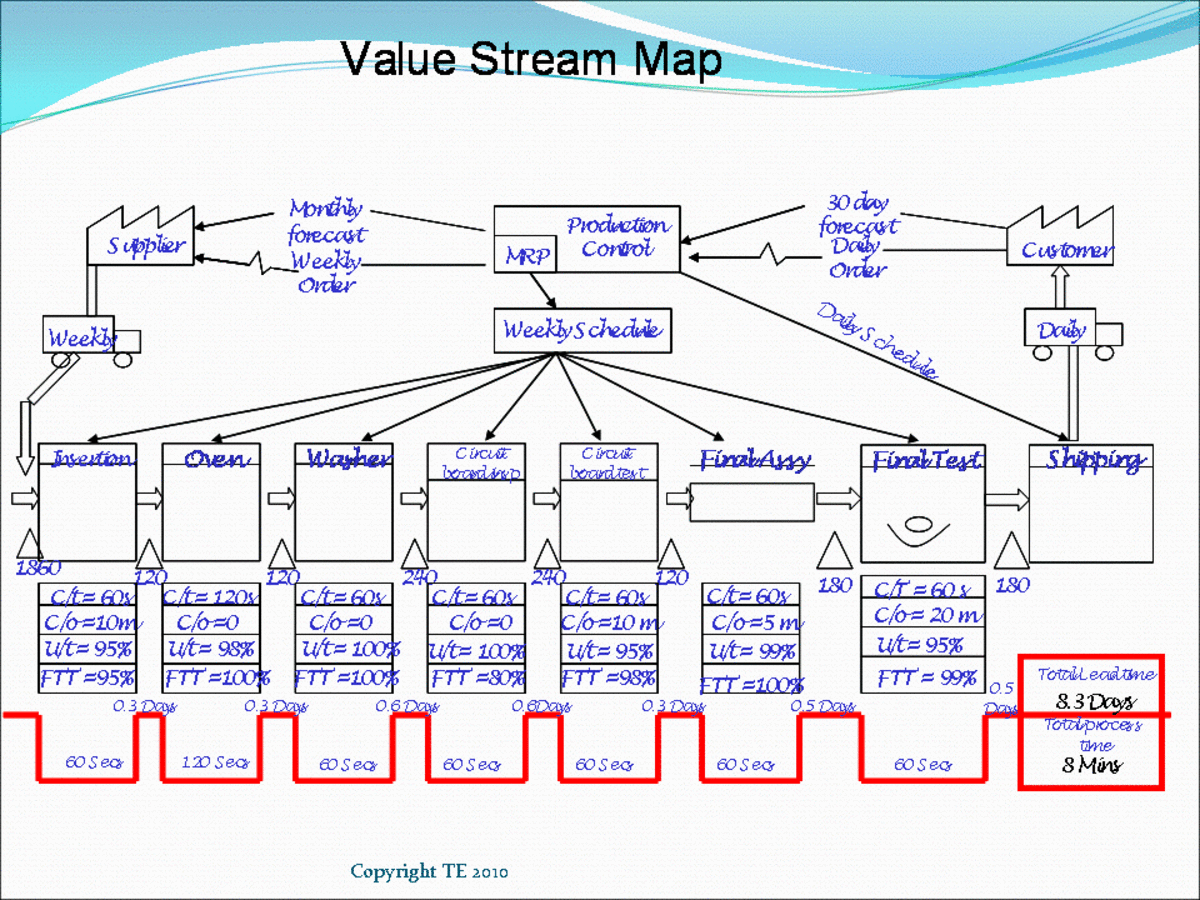All Outsourcing Isn't the Same - The Different Types of Outsourcing
Three Main Types of Outsourcing Solutions
There are three major types of outsourcing solutions. Traditional outsourcing is the hiring of individuals or companies to provide products and services overseas. Homesourcing is a domestic alternative to traditional outsourcing. The third type of outsourcing is business process outsourcing, which can rely on international or domestic service providers.

An Overview of Traditional Outsourcing
Traditional outsourcing arguably began with the hiring of factories in the developing world to build product for companies based in the developed world, formerly known as First World countries. With the dot-com boom of the 1990s, massive amounts of fiber optic cable were laid, creating a network that supports high speed, high volume data exchange.
After the dot-com bust, these fiber optic cables remained in the ground and bottom of the sea, connecting the world, including the developing world. Outsourcing of customer service calls, IT work and financial services became possible through the internet connections these fiber optic cables.
Traditional outsourcing of manufacturing expanded into the service industry. This shift to service work was enabled by a large workforce educated in the West, with many professionals possessing work experience for American firms prior to returning home.
Benefits of Traditional Outsourcing
- Outsourcing work allows companies to tap into labor pools that are much cheaper than their local workforce. For example, software developers in China and India can be hired for a fifth of the cost of an American based in California. Manufacturing wages are even lower in the developing world compared to the wages and benefits paid in developing nations.
- Outsourcing can turn time zone differentials into an advantage for the employer. The book “The World is Flat” gives examples of hospitals sending mammograms and X-ray files to medical professionals in Asia, allowing them to be reviewed by a professional and an answer ready for the patient in the morning.
- Small businesses, private firms and consultants can afford to hire back office workers via outsourcing. By outsourcing work like tax form preparation, legal research and appointment setting to dramatically lower cost locales, the small business has more time to work on the most profitable aspects of its business such as billable hours for consulting or new product design. By outsourcing low skill work to lower cost locations, small businesses save money on these tasks while focusing effort on more profitable tasks. This results in increased profits due to higher cash flow and lower expenses.

Risks of the Traditional Outsourcing
- Security
When you outsource your IT work to another country, you have to take the risk that the person doing tax returns and account setups in Bangalore or China isn't going to steal the user's credentials or identity. You also have to watch for someone designing your software and building in a back door to sell to hackers.
If someone is building your product overseas, the possibility exists that you are over-billed for the work performed or cheap items substituted for expensive ones to inflate the manufacturer's profit margin.
- Reliance on Scripts Hurts Customers
When work is shifted overseas, many workers move from using knowledge they have to following scripts. This is true even when someone has basic IT skills, due to the language barrier. When there is a reliance on scripts, users face delays in troubleshooting as the questions that are mandated by the script are asked and when the help desk personnel act as gatekeepers to technical subject matter experts.
- Human Automatons Can Hurt Quality
Someone hired only to generate code is called a "code monkey". The generation of complex but smoothly running or innovative software features is disproportionately the realm of American software engineers, a benefit of our innovation culture.
Those hired overseas are more likely to write many lines of code or create many software modules. Code that works is more likely to be bulky. And American software engineers are often hired to troubleshoot the problems found in the code.
- Intellectual Property Loss
One of the problems of hiring someone from another country is that you have less recourse when they steal your intellectual property. In the book "The World is Flat", the author mentioned a case where the concept of non-compete agreement did not seem to translate into Mandarin. You've provided them your designs, your work instructions and your parts list - and they see little if anything wrong carrying that intellectual property across the street to build your product without paying you the profits from the sale.
With software IP, the cost of the loss is even higher. It has been joked that it is almost impossible to find a legitimately purchased copy of Microsoft Windows in China or Russia. Compare this to the ruthless pursuit of those downloading music without payment in the U.S. and Europe and publicity of hotlines to report software piracy by businesses.
- Quality
Globalization of IT leads to an increased reliance on technology to ensure supervision and quality assurance. For example, there are crowd-sourcing websites that require workers to install software to take snapshots of their computer every few minutes during billable time to ensure that they are actually working.
Or automated software testing is performed instead of using human software testers, one more step to save money on software development but one that increases the reliance on the quality of the software test plan and software test software's operations by someone who may themselves be outsourced.
Traditional outsourcing can lead to the outsourcing or automation of quality control, increasing the risk of decreased quality in the end product or service. Language and cultural barriers inadvertently hurt the customer's impression of your product's quality, such as a data import screen I observed that said it was "pooling" data instead of pulling data or incomprehensible technical manuals written by those who are only theoretically fluent in the language.
An Overview of Homesourcing
Homesourcing is a play on the word out-sourcing. Instead of outsourcing work to someone overseas, the work is out-sourced to a home-based worker who is usually located in the same nation as the contracting employer.
While homesourcing workers are stereotypically stay at home mothers and housewives, the home based work force includes those who live in semi-rural areas far from major employers like the wives of farmers who would otherwise be unemployed, those who need to work non-standard hours due to family responsibilities, the disabled and retirees.

Benefits of Homesourcing
- Homesourcing like outsourcing saves overhead labor costs like office space for those companies that allow their employees to work from home.
- Homesourcing allows companies to hire employees who work in lower wage areas of their home country, often at a cost-comparative basis to the developing nation. For example, hiring someone who lives in the Midwest or South could be half the price of someone living in New York or California. Using homesourcing to tap into rural areas with high rates of underemployment can dramatically reduce wage rates without the backlash of outsourcing jobs to the developing world.
- Homesourcing reduces the travel costs for employees like tolls and gas, assuming they do not make up for the reduced commute with additional local travel.
- Homesourcing to a workforce distributed across the United States allows a company to offer support across multiple time zones without setting up formal offices across the country.
- Companies like JetBlue have reported greater productivity from employees who home-source. The productivity was so great that Jet Blu now home-sources all of its customer service representatives. Source, "The World is Flat" by Thomas Friedman.
- Homesourcing is one way to keep those who would otherwise retire due to health reasons to remain in the workforce. Someone faced with limited mobility or difficulty traveling can now work from home and remain partially engaged with the company. This increases worker loyalty and dramatically improves knowledge transfer from retiring workers to those still with the company.
- Home-sourcing means that workers working from home who still have power can keep working even if a disaster like Hurricane Sandy and Hurricane Katrina destroyed the company's headquarters and the servers they need in order to work.
- Homesourcing workers are within the same legal jurisdiction and tax system as the employer, simplifying book keeping and legal matters.
- There is no language barrier when home-source employees are based in the same nation as the employer.
- Homesourcing is an attractive option for employees who travel significantly. When traveling, they connect to the workplace network remotely. When they are home, they work from home, maximizing time with family and friends without having to travel into the office.
Risks of Homesourcing
- The skill sets of homesource workers may be very different from what an employer needs. Common areas for homesource workers include writers, graphics designers, online tutoring offered by teachers, transcription and medical billing by stay at home mothers who trained to work in that field and customer service representatives. It is harder to find IT, engineering and financial expertise for homesourcing unless the person working from home previously worked for the employer.
- Homesourcing can create legal headaches when the fine line between a contractor and an employee is reached. A homesource worker may be classified as an employee if he or she bills too many hours to the customer on a regular basis. This could force the employer to provide health insurance, vacation time and other benefits that drove the employer to seek contractors in the first place.
- Homesourcing is reliant upon network connections and the availability of personnel. After a major disaster, home based workers may be unable to work from home if the power is out or the employer’s servers are down. In these cases, a home based workforce is unable work.
- Home source workers are more likely to have constrained work hours, such as a 9 AM to 3 PM schedule based on when the children are in school. This may necessitate firms to hire more home source workers spread across multiple time zones to offer 8 AM to 5 PM service to customers.
- Homesourcing is not practical for most types of manufacturing. While craftspeople can and do make custom products at home, they sell their products through auction sites like Ebay or Etsy, not major retailers.
- Job positions promising applicants that they are "homesourcing" or "get to work at home" stuffing envelopes or assembling products are scams. Home-sourcing work does exist with companies like Alpine Access and myriad content farms. However, those seeking home-sourcing positions must thoroughly research the job and the employer before signing up.
An Overview of Business Process Outsourcing
Business process outsourcing is when a company outsources an entire business process. Human Resources business process outsourcing occurs when businesses hire a recruitment firm to search and vet all candidates for a job or manage the company’s benefits and payroll.
Business process outsourcing can include a company’s entire manufacturing operation, with assembled product delivered to the company for packaging, final test and delivery to the customer. Or the logistics themselves are outsourced, with a third party hired to manage the warehouse, receive orders and ship products. In some cases, the business process outsourcing firm’s employees work within the offices, factory or warehouse of the contracting company. What are the benefits of this type of outsourcing solution?

Benefits of Business Process Outsourcing
- Business process outsourcing allows a company to outsource its entire front office, back office or specific divisions to another company that specializes in this type of service. A small business owner avoids legal problems by relying on an HR firm that knows how to post job ads that are compliant with the EEOC, ask appropriate questions and vet candidates per legal criteria.
- Business process outsourcing does not mean that the company has to follow the traditional outsourcing model and rely on someone overseas. There are many payroll, HR, IT and design firms based in the United States who offer business process outsourcing. Business process outsourcing allows companies to outsource work to a lower cost or higher productivity supplier without having to ship work overseas.
- Business process outsourcing or BPO offers lower cost services than relying on in-house personnel to do the same work. Your internal IT department may only be needed 80% of the time and require overtime pay rates when servers are upgraded over a weekend. An IT service provider’s labor costs are divided among several customers while customers don’t have to pay for unproductive time.
- Business process outsourcing gives companies instant access to subject matter experts when required for the business process without having to hire a consultant. For example, if an HR BPO receives an application from a disabled person, the customer does not have to foot the bill for an expert familiar with the Americans with Disabilities Act; the BPO pays for these services if they do not already have an expert on staff.
- Business process outsourcing allows small businesses and even large companies to tap into the superior businesses processes of a BPO. For example, Fedex is a supply chain BPO in addition to delivering packages. Whether they take over your supply chain management in addition to delivering your product or manage your warehouse and supply depot, businesses can outsource these tasks to a business leader like Fedex.
Disadvantages of Business Process Outsourcing
- BPO providers sometimes save money by outsourcing work to traditional outsourcing firms. A company may outsource its IT department to a local BPO only to find out that customer calls are routed to a customer service center in India. Then the same risks of traditional outsourcing are in place.
- Business process outsourcing force businesses to change their internal processes to work with the BPO. For example, changes to an Oracle server used to require an email to the system administrator; now a formal request with multiple approvals must be sent to the IT BPO before someone is scheduled to resolve a database problem or install a patch.
- Business process outsourcing introduces information security risks just like traditional outsourcing. The security of your employees’ personally identifiable information is dependent on the security of the HR or financial firm, whether they are based in India or Indiana. The IT security of your data becomes the responsibility of the IT services firm. However, when you choose this business outsourcing solution, customers will lay blame on you if their data is lost, not the outsourcing firm.
- Business process outsourcing which brings contractors into a company can create a security risk as well as management problems. Contracting firms must rely on the background checks of the outsourcing firm, while they do not have full control over those who are coming in to perform the outsourced business processes. The customer may request an Oracle server support expert, but they may not be able to decide who can come in to do the work while trusting that the contractor has the necessary credentials and legal permission to work. One common problem is the hiring of illegal aliens by janitorial service providers, lowering their costs but at the cost of a potential security violation on military bases and defense contractors along with the violations to immigration law.
- Business Process Outsourcing moves an entire department out of the company. If the company later decides it does not like the arrangement, it may have lost the people with the expertise to do the work.
- When you switch from one BPO firm to another, they may not always provide all necessary information for the transition to go smoothly. Documentation they created on your internal processes or records such as analysis of user complaints may not be given at all.
- Outsourcing of business processes can result in the BPO outsourcing smaller tasks to third parties. If the IT department is outsourced, the web design work may be given to a stay at home home-source worker, software test scripts written by a consultant in California while coding is done by a team in India. The BPO completes the task of designing a new shopping cart and ordering system that works with the upgraded server, but the customer has little or no control over who is hired or the ability to contact these workers directly to answer questions or correct problems.








